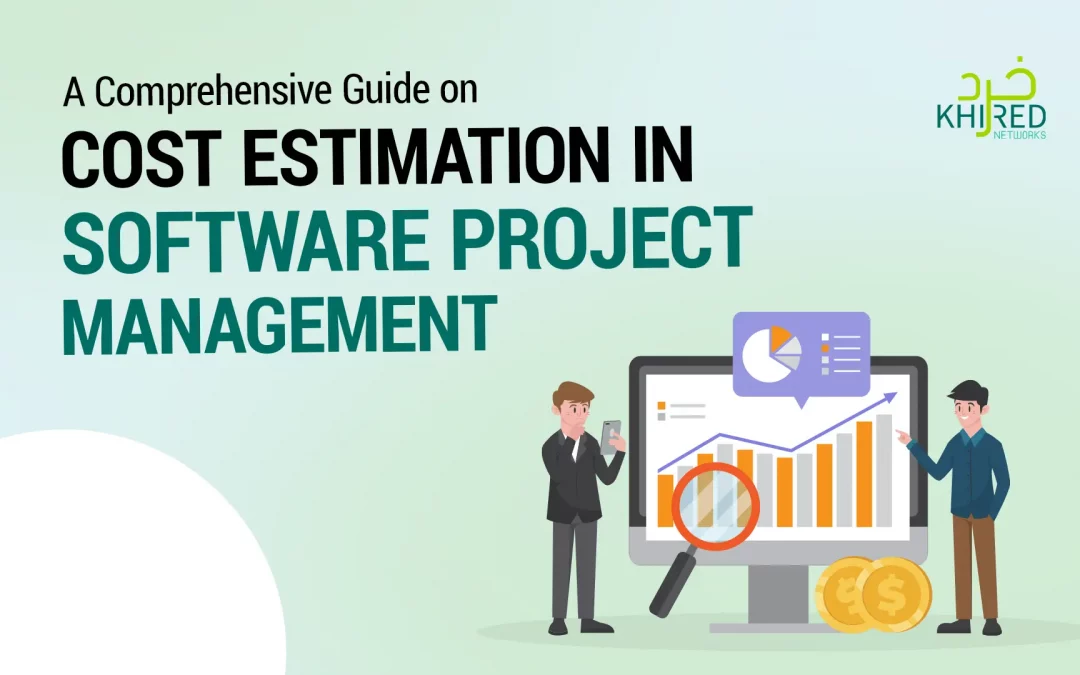Wrong cost estimation is one of the main reasons software developers fail to achieve the desired projected goals. The Project Management Institute (PMI) found in a survey that escalating costs resulted in the failure of 28% of software projects.
What’s the solution?
Well, the best approach is to ask questions like how much, how long, and most importantly, is this project economically feasible. As a customer, you must inquire all these aspects with your development partner before signing an agreement. Moreover, clearly communicate your expectations with developers and track progress with expenses at every stage.
On the other hand, if you are a software development company, try to eliminate factors that could escalate overall project costs. Besides, estimate a budget based on minimum expenses without compromising the project’s scope and quality.
In this comprehensive guide, we will explain five proven strategies for accurate cost estimation in software project development.
What is Cost Estimation?
Cost estimation is the process of estimating the financial and human resources, equipment and tools, and time required to complete specific tasks within the given project deadline.
Let’s understand this concept with a real-world example.
Suppose you run a security company with 100-150 employees. You need cross-platform software to manage your day-to-day operations like scheduling, shift management, time tracking, payroll processing, etc. This software would meet the workforce management needs of your HR department.
Hence, you contact a software development agency that specializes in building similar solutions. Based on your company’s needs, you give an estimated deadline for project completion.
The agency then analyzes your requirements and identifies the skillsets, tech stack, and tools needed for this project. Moreover, they also evaluate how much time will they need to develop a solution that caters to your needs.
Based on these estimations, a final quote is given that aligns with your budget and expectations as well as covers all expenses of the development agency.
While it seems simple, cost estimation in software project management is a time-consuming and hectic task. It requires careful analysis of the project scope and requirements. Wrong estimation can escalate costs and result in unnecessary delays.
Factors Influencing Software Cost Estimation
Below are some factors that play a key role in accurate cost estimation in software development projects:
1. Project Scope
The most determining factor of accurate cost estimation is the scope of the software development project. Lage projects imply more functionalities and require more resources, time, and effort.
As a project manager, therefore, you must clearly define desired objectives and project requirements. Besides, document all the details to keep cost estimations within the targets throughout the SDLC.
2. Development Period
The second important consideration is the estimated time required to deliver the final product. Short timelines may seem lucrative; however, they increase development costs since you need more resources to complete the assigned tasks. In some cases, overtime work also becomes a necessity.
A better approach is to give a longer, flexible, and achievable deadline that ensures effective planning and implementation and cost optimization for development.
3. Team Composition
Your software development team plays a key role in successful project completion within the given budget and deadline. Complex projects need specialists with advanced skills. As a result, they charge higher and increase overall project costs.
Hence, consider your team composition based on the project requirements and carefully analyze the liabilities while estimating the cost.
4. Technology Stack
Another cost driver is the technology stack. Software development involves using different highest-paying programming languages, frameworks, and technologies. Some tools require licenses; some are open-source.
Additionally, certain technologies may require more specialized skills both in terms of hourly rate and development speed. All these elements must be considered to calculate the project costs and give a realistic quote to the client.
5. Testing and Quality Assurance
Testing is crucial to ensure the final product is free of bugs and errors. It is an essential part of the software development lifecycle.
For instance, QA engineers use different testing approaches to verify the software quality. Some of these include unit testing, integration testing, and user acceptance testing. Focusing on quality assurance reduces the post-launch cost of bugs with up-front charges.
Five Most Common Cost Estimation Techniques
There are many cost estimation techniques available. Below are the five most commonly used ones:
1. Expert Judgment
The method relies on experienced project managers or developers, who provide an estimation based upon previous similar projects. It is quick and easy to apply. However, this approach may not deliver the accuracy needed if judgments are not supported with data or structured approaches.
2. Analogous Estimation
Analogous estimation benchmarks the current project to similar projects. When records of similar projects are available with all details, analogous estimation would be quite accurate. Nevertheless, there is a possibility of deviation in differences between projects; be it scope or complexity.
3. Parametric Estimation
Cost estimation in this method relies on mathematical models and historical data. This technique requires the specification of variables such as the number of developers, work hours, and average hourly rate. These variables are then applied to an arithmetic formula used in the computation of the estimated cost.
However, parametric estimation requires more data than analogous estimation; it is suitable for projects that have established historical data.
4. Bottom-Up Estimation
In bottom-up estimation, the project is broken into small pieces, and each piece is estimated independently. The sum of total costs of all these individual pieces forms the final cost of the project.
One drawback of this approach is that it is time-consuming. However, it is an ideal method of cost estimation in complex software projects.
5. Three-Point Estimation
This approach involves determining three separate estimates: The optimistic estimate (O), the most likely estimate (M), and the pessimistic estimate (P). The result of estimation is found by averaging these three estimates with this formula: (O + 4M + P)/6.
This way of estimation includes risk analysis in the estimation process so that eventually, more realistic results will be obtained.
Steps to Estimate the Cost of a Software Development Project
Follow these seven steps to optimize your software project costs and achieve high ROI:
- Define Project Requirements: The first step to estimate the software project costs is to define its requirements. These include functionalities, user stories, technical specifications, and business objectives.
- Distribute the Project into Tasks: In the second stage, divide the project into more manageable tasks or modules. This approach helps project managers identify specific resources required and time needed for every segment of the project. Hence, cost estimation becomes more precise and relevant.
- Resource Allocation: After distributing complex projects into smaller tasks, assign them to relevant people who have the prerequisite skills and experiences. Make the right people work on the right thing at the right time to avoid delays and cost overruns.
- Time and Effort Estimating: Estimate how long the tasks will take by using appropriate techniques such as unction point analysis or story points. Keep in mind that some of them will genuinely take longer than others simply because they are by nature more complex, or because they may necessitate more resources.
- Choose an Estimation Method: Use one or more of the cost estimation methods described above, like expert judgment, parametric estimation, to estimate the overall cost of the project. For better results, you can also combine different techniques to improve the accuracy.
- Provide Contingency Reserves: Each project carries some amount of unquantifiable risk. Therefore, about 10 to 15 % of the overall budget should be included to adjust for unexpected cost and scope changes.
- Review and Revise: Once the initial estimate is finalized, discuss it with the stakeholders in order to know whether it is up to their marks or not. Based on the responses received, adjust the estimates; however, the cost, time, and quality should be balanced.
Conclusion
The most important thing about cost estimation in software projects is its complexity. Despite taking all cost-cutting measures, following the best strategies, and a structured estimation process, delivering a project on time is never easy.
A high level of accuracy in cost estimates, thus, critically influences project goals in terms of quality delivery and long-term success.
Proper cost estimation involves some form of risk reduction, better planning, and effectiveness of cost efficiency in software development projects. Besides, key stakeholders must review the process to update their estimates with changing project needs and complexities.



